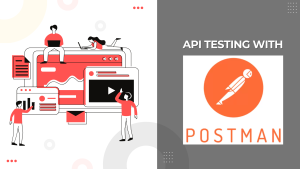Introduction:
Acceptance testing is a critical phase in the software development lifecycle aimed at validating whether a system meets specified user requirements and is ready for deployment. In this blog, we’ll explore the significance of acceptance testing, its key components, and how it contributes to seamless software delivery and enhanced customer satisfaction.
What is Acceptance Testing?
Acceptance testing, also known as user acceptance testing (UAT) or end-user testing, is the final phase of the testing process before software is released to production. It involves evaluating the software’s functionality and performance against predefined criteria set by end-users or stakeholders. The primary objective is to ensure that the software meets business requirements and user expectations.
Why is Acceptance Testing Important?
- Validating User Requirements: Acceptance testing verifies that the software fulfills the intended business objectives and aligns with user needs and expectations. It ensures that the developed solution meets the specified criteria and functions as intended in real-world scenarios.
- Minimizing Risks: By identifying and addressing any discrepancies or defects before deployment, acceptance testing helps mitigate risks associated with software failures or unsatisfactory user experiences in production environments.
- Enhancing Customer Satisfaction: By involving end-users or stakeholders in the testing process, acceptance testing fosters collaboration and transparency, leading to a product that better meets user needs and preferences. This, in turn, enhances overall customer satisfaction and loyalty.
Components of Acceptance Testing:
- User Acceptance Testing (UAT): Conducted by end-users or business representatives, UAT focuses on validating whether the software meets business requirements and user expectations. It typically includes functional, usability, and compatibility testing.
- Alpha and Beta Testing: Alpha testing involves testing the software in a controlled environment by internal teams, while beta testing involves testing by a select group of external users in a real-world setting. Both aim to gather feedback and identify issues before wider release.
- Regression Testing: Ensures that new changes or features introduced in the software do not adversely affect existing functionality. It helps maintain the overall integrity and stability of the application.
Best Practices for Successful Acceptance Testing:
- Clear and Defined Acceptance Criteria: Establish clear acceptance criteria that outline the expected behavior and functionality of the software. This helps ensure that all stakeholders have a common understanding of what constitutes a successful outcome.
- Early Involvement of Stakeholders: Involve end-users and stakeholders early in the testing process to gather feedback and insights throughout the development lifecycle. This enables timely identification and resolution of issues, reducing rework and delays.
- Comprehensive Test Scenarios: Develop comprehensive test scenarios that cover various user workflows and use cases. This helps uncover potential issues or gaps in functionality and ensures thorough validation of the software.
- Automate Repeatable Tests: Automate repetitive test scenarios to streamline the testing process and increase efficiency. This allows for faster execution of tests and frees up resources for more complex testing activities.
- Document and Track Defects: Document and track defects identified during acceptance testing, including their severity and impact on user experience. Prioritize and address critical issues promptly to maintain project timelines and quality standards.
Conclusion:
Acceptance testing plays a crucial role in validating user requirements, minimizing risks, and enhancing customer satisfaction in software development. By involving end-users and stakeholders early and often, establishing clear acceptance criteria, and adopting best practices, organizations can ensure seamless delivery of high-quality software that meets user needs and expectations.




